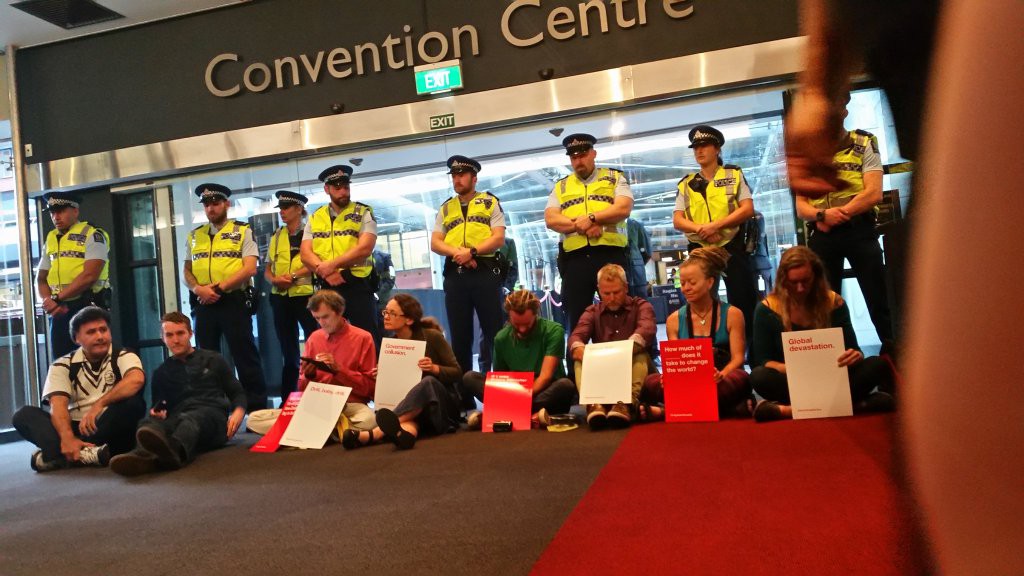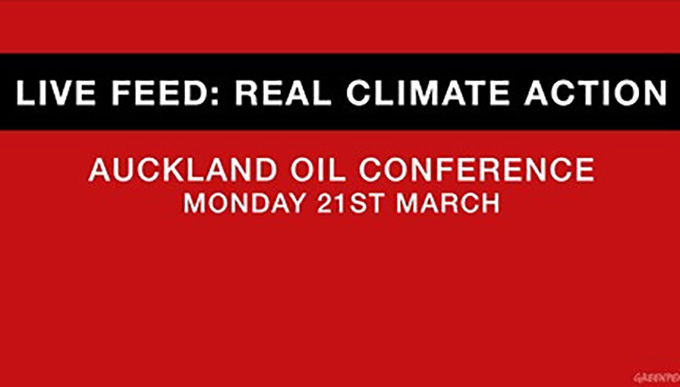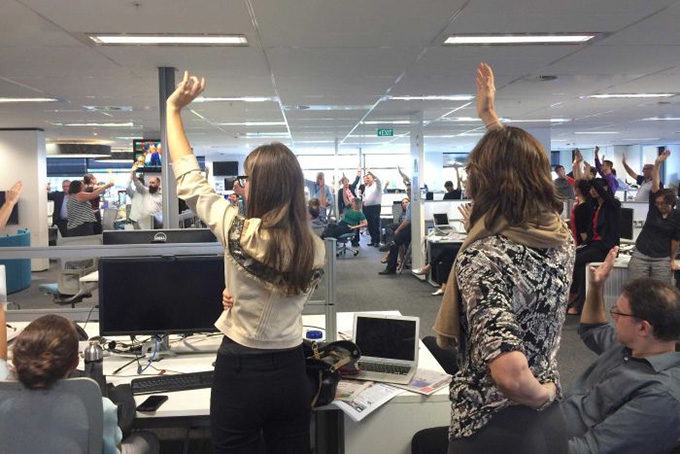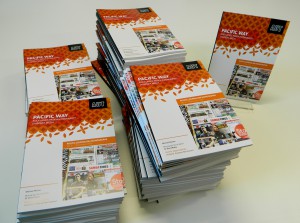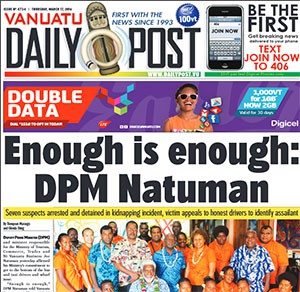Political Roundup by Dr Bryce Edwards.
TVNZ’s controversial Kiwimeter survey
[caption id="attachment_4808" align="alignleft" width="150"]

Dr Bryce Edwards.[/caption]
Is TVNZ’s Kiwimeter survey simply designed to effectively gather public opinion on matters around national identity, or is it fostering racism? That’s the question at the heart of the current controversy over the broadcaster’s attempt to carry out the biggest survey of national identity ever undertaken in New Zealand.
In early March TVNZ launched Kiwimeter, promoting it as the “biggest survey of national identity ever undertaken in New Zealand” – see: Take the Kiwimeter test: The biggest ever survey of NZ’s identity. You can go directly to the survey here: Kiwimeter: What kind of Kiwi are you?
“We’re all Kiwis, but we don’t all think the same” runs the promo. TVNZ says the online Q&A is designed to gather opinions on a range of issues, including the environment, religion, gender, race relations, immigration, poverty and sport. Respondents are then placed in one of six groups – patriot, globalist, egalitarian, loyalist, traditionalist or sceptic.
At the time of the launch John Gillespie, TVNZ’s Head of News and Current Affairs, said his hope was that “Kiwimeter will spur a lively debate among New Zealanders about our identity, in the same way Vote Compass engaged Kiwis in political conversations.”
In fact, Kiwimeter was produced by the same team as TVNZ’s election-year Vote Compass, comprised of Canadian firm Vox Pop Labs – “an independent and non-partisan team of political scientists” – with input from highly respected academics from Victoria University (Jack Vowles and Kaapua Smith) and the University of Auckland (Jennifer Lees-Marshment and Danny Osborne).
Racism allegations
In one question, respondents are asked to agree or disagree with the statement “Maori should not receive any special treatment”, and to indicate the strength of their belief.
This question is at the root of most of the controversy over the survey, with Labour’s Te Tai Tokerau MP and Maori Affairs spokesperson Kelvin Davis stating the question is “out and out racism” and needs to be removed from the survey – see Stuff’s Maori MPs claim TVNZ KiwiMeter survey incites racial intolerance.
Davis is reported as saying: “It just evokes images of Don Brash 2004: implying that Maori have special treatment, I’d like to know what special treatment they’re talking about. Is it our health statistics, the fact that we’re dying 10 years earlier than non-Maori, our poor education statistics? What exactly are they meaning by special treatment? I just find it offensive.”
Labour leader Andrew Little echoed Davis’ concerns describing the question as “dubious”, “ham-fisted and cack-handed” and saying it “smacks more of prejudice” as it “begs the question that there is special treatment anyway.”
Green Party co-leader Metiria Turei described the survey questions relating to Maori as “fundamentally misleading and racist and a disgraceful approach to serious issues facing Maori in Aotearoa. Are they asking people about having Treaty rights recognised and reparation for land stolen by the Crown, are they talking about the special treatment of not getting access to housing or our parents being kicked out of bars for being Maori?” – see Mihingarangi Forbes’ PM defends ‘racist’ TVNZ survey.
Maori Party co-leader Marama Fox said she wanted to know more on how the survey came about and questioned why TVNZ had engaged a Canadian firm “to find out what New Zealanders think about New Zealanders.” She also took issue with some of the questions around religion and immigration telling RNZ’s Guyon Espiner “it seems like this survey is attacking minority groups” – you can listen to her five-minute interview here: TVNZ’s ‘special treatment’ question widely criticised.
The Human Rights Commission has also voiced concern over the survey – see RNZ’s TVNZ quiz ‘biased’ on Maori question – HRC. The Commission alleges the question on special treatment for Maori demonstrates “a biased belief by the KiwiMeter authors. The commission believed the authors had decided in advance that Maori received special treatment already.”
Outrage and offence
“’Special treatment’ is a euphemism for Maori privilege, a belief that somehow Maori receive something that other NZers can’t attain,” alleges Martyn Bradbury in his blog post, TVNZ play the race game – again.
He says TVNZ’s response that there must be questions that reflect all parts of society is akin to promoting “victim blaming for sexual assault, climate denial and homophobia because some sections of society also believe those things.” Bradbury says “We look to a public broadcaster to question bigotry, not foster it.”
“According to this noxious survey, you’re less of a patriot for being proud of Maori culture” argues Madeleine Chapman in The ‘Kiwimeter’ is nasty, divisive rubbish. Do you disagree, slightly agree, or strongly agree?
Stephanie Rodgers attempts to shed some light on Where those Kiwimeter questions came from. Rodgers took part in the local pilot study of 11,000 respondents that led to the development of the Kiwimeter survey and was recruited after her participation in the earlier Vote Compass project.
Rodgers kept a copy of the pilot questions and offers them up saying “So there we go. If you were wondering how the Kiwimeter sausage was made, there’s the Vote Compass survey horse. What does any of this mean? Buggered if I know, but I figured someone will be able to draw interesting conclusions.”
Regardless of the survey’s intentions, Kiwimeter has caused harm and offence, says blogger Tze Ming Mok – see: ‘Kiwimeter’ is a methodological car crash and I still can’t look away. She says accusations of racism are justified, because if “the overall effect of ‘Kiwimeter’ is one of causing emotional distress and feelings of marginalisation for Maori, even if due to incompetence, then it’s ultimately a racist effect.”
She argues that the academics involved should have made greater efforts in testing to ensure the survey would not cause harm to respondents. Some similar points are made by Giovanni Tiso in What colour is your nationalism? He says the involvement of “the state broadcaster” and universities should be of great concern.
One political scientist has also spoken out strongly against Kiwimeter. The head of the political science department at the University of Canterbury, Bronwyn Hayward (@BMHayward) has been making the case on Twitter that there is bias in the survey, and says “Think #Kiwimeter critics are too PC, easily offended & avoiding tough debate? Imagine YOUR human rights got challenged by TV, for fun”.
So is the Kiwimeter survey worth participating in? In his Herald column today Raybon Kan says: Kiwimeter survey? Don’t bother.
In defence of Kiwimeter
Professional pollster Andrew Robertson, of Colmar Brunton, defends TVNZ’s project in his blog post Is it racist to measure racism? Robertson’s key points are: “1. The only way we can know if racism is a problem in New Zealand is to measure it scientifically, and to see if it is getting better or worse over time. 2. The measurement of racism is complex. It is typically done by asking people if they agree or disagree with a series of scientifically selected attitude statements. There is a deep logic behind how we select these statements. 3. Sometimes these attitude statements can seem offensive, but it’s important to include them because some parts of our society endorse them. If we exclude these statements, we can’t measure prejudice.”
His arguments are expanded by the research team from the University of Auckland’s New Zealand Attitudes and Values Study – a 20-year longitudinal study of social attitudes, personality and health outcomes – who yesterday released the following statement on Why and how we measure racism, sexism, and other forms of prejudice (PDF).
Critics appear to have completely missed that the TVNZ survey is designed to measure public attitudes, not the rights or wrongs of those attitudes, says Newstalk ZB’s Barry Soper: “They all seem to have missed the point that this is an attitudinal survey, it’s not about the past, it’s trying and find out where we all fit in the great big melting pot” – see: Maori MPs miss the point of TVNZ’s survey.
RNZ’s media commentator Gavin Ellis also spoke favourably about the survey in his seven-minute discussion with Kathryn Ryan on media, saying he thought it was “a very, very well-constructed survey”.
TVNZ and survey team response
TVNZ’s John Gillespie said he would not apologise for the question and it would remain in the survey: “We think that in the survey it is important to be robust and to have questions in it that reflect all parts of society so we won’t be taking out questions where we thought long and hard about why they’re in there” – see Claire Trevett’s TVNZ survey question about Maori branded racist and offensive.
The company contracted to help TVNZ with the survey, Vox Pop Labs, has responded to Kelvin Davis’ claims, labeling them “categorically false” – see Mihingarangi Forbes’ PM defends ‘racist’ TVNZ survey. CEO, Clifton van der Linden, said his company was reflecting views that already existed and defended the wording of the question, saying it “doesn’t imply Maori received special treatment. If I were asking the question ‘John shouldn’t paint his house yellow’, it doesn’t imply John is painting his house yellow.” He argues “We can learn more about the mechanisms through which racism and prejudices operate and find ways to combat these prejudices. If you don’t ask the question, how do you hope to find the answer?”
Forbes reports that Danny Osborne of Auckland University, one of the academics involved in creating the survey, said he and his colleagues recognised “the issues were sensitive, and accepted that when a question was drawn out in isolation it could appear to be biased. However, the questions used in KiwiMeter are mutually dependent, and so removing one question would destroy its balance.” He is referring to questions “A history of discrimination has created conditions that make it difficult for Maori to be successful” and “Maori culture is something that all New Zealanders can take pride in, no matter their background.”
Threats to media and academic freedom
One of the academics involved in Kiwimeter, Jennifer Lees-Marshment (@jleesmarshment) has tweeted: “Sad to see the Labour Party and other politicians interfering with academic freedom and telling us how to design public opinion surveys”.
So should we be concerned that politicians, state bodies and activists are attempting to control research carried out by media and academics? Absolutely, says David Farrar: “What is especially worrying about this, is they are trying to censor and control research. They’re saying that because they have a view that there is no special treatment, you shouldn’t even be allowed to ask if people have that view. It is profoundly dangerous” – see: Now the left are trying to censor research.
Farrar says he would have chosen a different wording himself but ultimately believes no question should be off limits – “For how else can you find out how people have that view?”
He commends TVNZ for refusing to bend to pressure and challenges Kelvin Davis’ claim he doesn’t know what “special treatment” Maori receive with a blunt response: “He’s an MP for an electorate where eligibility is dependent on your blood ancestry”.
On Public Address, academic researcher Peter Davis makes an interesting comment at the end of Tze Ming Mok’s blog post, ‘Kiwimeter’ is a methodological car crash and I still can’t look away. Davis writes that he is not aware of Kiwimeter and therefore is not necessarily defending its methodology but, nonetheless, “There is a problem if ethics committees start saying that you cannot ask questions about controversial and/or sensitive issues. You immediately get a whole lot of subjects taken off the agenda”. He gives an international example showing knowledge and understanding of prejudice can be enhanced by asking questions that are, on the face of it, racist.
And are TVNZ’s media rivals playing a part in stirring up anger over the survey? RNZ and Stuff have both published reports claiming the TVNZ survey is designed to find out “how Kiwi” we are – a phrase that does not actually appear in TVNZ’s own discussion or promotion of the survey and is qualitatively different to the Kiwimeter tagline “What kind of Kiwi are you?”
Kiwimeter data
TVNZ has been broadcasting the results from the survey, which has been taken so far by over 140,000 people – see the following reports by Daniel Faitaua: Kiwimeter: First results are in as survey on national identity climbs to 80,000, Kiwimeter reveals we’re proud of our anti-nuclear stance and lifestyle, Kiwimeter: Nationalism, sport the top Kiwi values and Kiwimeter: Turns out Aucklanders aren’t too different from the rest of NZ.
These reports are illuminating and useful contributions to public debate about politics and society. But the fact they have become the subject of such controversy also reveals how sensitive New Zealand has become to issues of ethnicity and, in particular, perceived racism.
Finally, Kiwimeter isn’t the first attempt to categorise New Zealanders into different social groupings representing our values and lifestyles. A few years ago, Jill Caldwell and Christopher Brown attempted to create a “snapshot of New Zealand that explores our unspoken class system and the hidden social boundaries that separate us from each other” with their book “8 Tribes”, which broke us into the groups represented by the geographical areas of: North Shore, Balclutha, Otara, Cuba St, Grey Lynn, Remuera, Raglan, and Papatoetoe. You can find which of the eight tribes you belong to here: 8 Tribes.
]]>




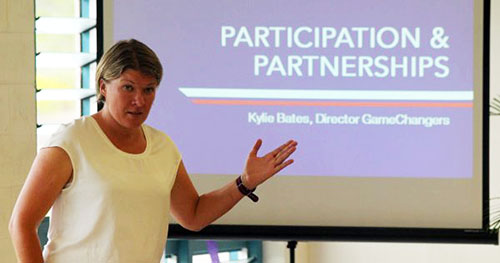









 Women meeting in Suva as part of Femlink’s first National Women’s Human Security Consultation. Image: Jeff Tan/Action Aid[/caption]
Information is then taken to the district level and finally feedback is sent back to the community.
Women meeting in Suva as part of Femlink’s first National Women’s Human Security Consultation. Image: Jeff Tan/Action Aid[/caption]
Information is then taken to the district level and finally feedback is sent back to the community.





























